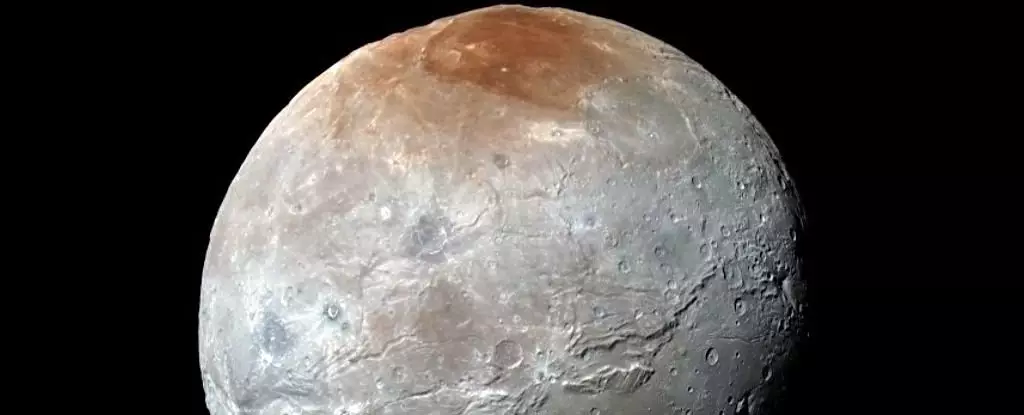In the farthest reaches of our Solar System, residing an impressive 5.7 billion kilometers from the Sun, lies Pluto, the celebrated yet controversial dwarf planet. Pluto might not be the largest celestial body in its cosmic neighborhood, but it houses a fascinating, icy world characterized by glacial formations, jagged mountains, and ancient craters, where temperatures can plunge to a staggering -232°C. Orbiting around Pluto are five moons, with Charon being the most prominent. Interestingly, Pluto and Charon exist in a binary system, which is quite rare among celestial pairings. This unique dynamic blurs the lines within our conventional understanding of planets and moons.
Charon’s mass and size make it a unique object in the Solar System. With a diameter of just over 1,200 kilometers, Charon is approximately half the size of Pluto. To make matters even more intriguing, Charon is the largest moon relative to its parent body among all known moons. This unusual size ratio highlights the complexity of their interaction; as Charon orbits Pluto, both bodies revolve around a common center of mass outside of Pluto. Unlike the Moon-Earth dynamic, where the Earth maintains a steadfast position, Pluto and Charon demonstrate an exquisite gravitational dance that leads to Pluto’s reclassification as a dwarf planet.
This reclassification is largely due to Pluto’s inability to clear its orbital neighborhood; it exists alongside Charon rather than dominating its surroundings. Consequently, Pluto has lost its status as a “full planet” in scientific literature, a decision that sparked significant debate within the astronomical community.
In a groundbreaking recent study led by astronomer Silvia Protopapa from the Southwest Research Institute, vital information about Charon’s surface was unveiled. Through observations conducted by the powerful James Webb Space Telescope, researchers discovered significant quantities of carbon dioxide and hydrogen peroxide. This discovery gnaws at the edges of our understanding of how Charon and Pluto, as well as other bodies within the Kuiper Belt, formed, eventually providing insight into the evolutionary history of celestial mechanics.
The detection of carbon dioxide is paramount; it serves as a key indicator of the moon’s geological history. Current hypotheses suggest that the carbon dioxide was likely released by impacts, exposing subsurface materials due to cratering events caused by asteroids and other objects. Understanding these processes is crucial for piecing together the evolutionary puzzle of Charon.
The James Webb Space Telescope, launched in 2021, is pivotal in unlocking the mysteries hidden in the far reaches of our Solar System. With its vast six-and-a-half-meter mirror, it possesses unparalleled sensitivity and the capability to observe infrared light. Unlike standard telescopes, which capture wavelengths visible to the human eye, Webb specializes in the infrared spectrum, allowing it to detect molecular signatures that paint a clearer picture of distant celestial objects.
One of the key methodologies employed in this research is spectroscopy, a technique that breaks down light into its constituent wavelengths. Each element and molecule has a unique spectral signature, akin to a fingerprint. This advanced observation technique revealed the presence of not just carbon dioxide but also hydrogen peroxide alongside the already identified water ice on Charon’s surface.
The origins of Charon remain shrouded in speculation, yet several theories attempt to explain how this moon came to be. One prevailing theory posits that a cataclysmic event involving a significant object from the Kuiper Belt collided with Pluto nearly 4.5 billion years ago. This collision could have resulted in a fragment breaking off to coalesce into Charon. Another possibility suggests a more subtle interaction, in which two objects collided, merging into the currently observed celestial dynamics of Pluto and Charon.
Discerning the chemical composition of Charon enhances our understanding of these formation theories. Not only does the detection of carbon dioxide and hydrogen peroxide offer insights about Charon’s history, but it also provides a basis for comparative analysis with other trans-Neptunian objects further out in the Solar System.
Charon, with its frigid surface and rich geological history, continues to be a topic of rigorous scientific investigation. The newfound presence of carbon dioxide and hydrogen peroxide on its surface is not merely a discovery of substances but a revelation of the complex interactions that govern celestial bodies beyond our immediate observations. As research progresses, our understanding of Charon will undoubtedly refine not just our knowledge of Pluto as a dwarf planet, but also the dynamics and formation of other objects in the outer reaches of our Solar System. Each new insight brings us one step closer to unraveling the intricate tapestry of our cosmic neighborhood, proving that even in the cold depths of space, there is warmth in discovery.


Leave a Reply